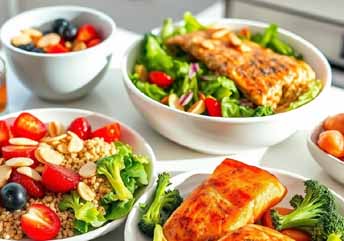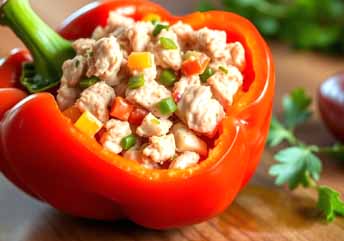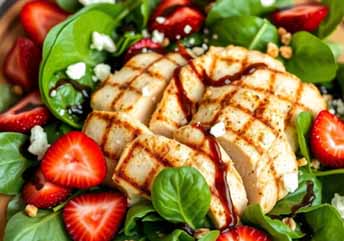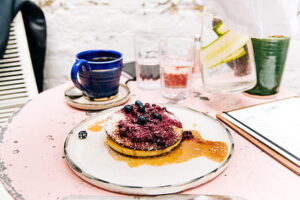Over 70% of extreme dieters regain weight within a year—discover if a 1000 calories a day menu plan is your safe path to lasting weight loss. A 1000 calorie diet can spark rapid weight loss but is only safe under medical supervision due to risks like nutrient deficiencies.
You’re here because you’re exploring a 1000 calories a day menu plan, hoping it’s the answer to rapid weight loss. However, this very low-calorie diet (VLCD) demands serious caution. A 1000 calorie diet can spark rapid weight loss but is only safe under medical supervision due to risks like nutrient deficiencies.
Therefore, this guide cuts through the noise, offering safe low-calorie meal ideas and tips for weight loss sustainability.

The Reality Check of 1000 Calories a Day Menu Plan
However, let’s get real for a moment. A 1000 calorie diet plan isn’t just about simply cutting back on a few snacks; instead, it’s a very intense eating regimen. Many individuals eagerly search for an easy 1000 calorie meal plan, but the truth is, this specific approach truly demands serious consideration and a deep understanding of its implications.
What You’ll Discover Here
This comprehensive guide aims to cut through all the noise. Specifically, we’ll uncover precisely what a daily thousand-calorie food schedule means for your body. More importantly, we’ll empower you with knowledge, helping you understand if this low-calorie meal plan is genuinely suitable for your personal health goals.
Is This Extreme Eating Regimen for YOU? The Non-Negotiable Medical Talk
According to a 2023 NIH study, VLCDs under 1000 calories are reserved for medical cases like severe obesity. Let’s clarify this crucial point: a 1000-calorie diet is, in essence, a Very Low-Calorie Diet (VLCD). These are medically defined as plans involving calorie intake typically under 800-1000 calories per day, and consequently, they are generally not intended for casual dieting or self-prescription.
Who Should Follow a 1000-Calorie Diet? (Doctor’s Orders Only!)
A very low-calorie diet (VLCD) like a 1000-calorie plan is not for casual weight loss. It’s a powerful tool reserved for specific medical situations, requiring strict medical supervision.
When Is It Recommended?
Your doctor may recommend a VLCD for:
-
Severe Obesity: If you have a high BMI and rapid weight loss is medically necessary for health.
-
Pre-Surgery Prep: For procedures like bariatric surgery, where quick weight loss ensures safety.
-
Weight Loss Plateau: When other methods fail, and a controlled VLCD is guided by your medical team.
Non-Negotiable: Medical Guidance
In all cases, consult a registered dietitian or physician to ensure safety and effectiveness.

Who Should Avoid a 1000-Calorie Diet?
A 1000-calorie diet is not safe for most people without a doctor’s explicit guidance. Certain groups face serious risks due to the diet’s extreme restrictions.
Specific Groups to Avoid This Diet
-
Pregnant or Breastfeeding Women: Your body needs extra nutrients to support you and your baby’s healthy development.
-
Children and Teenagers: Growing bodies require ample fuel, and this diet can harm long-term health.
-
Those with Disordered Eating: A 1000-calorie plan may trigger or worsen unhealthy food relationships, making it a no-go.
-
High-Level Athletes or Active Individuals: This low calorie intake won’t provide enough energy for performance or recovery.
-
People with Health Conditions: Avoid if you have diabetes (especially on medication), heart disease, kidney/liver issues, thyroid imbalances, or a history of gallstones, as risks are significant.
Is It Safe to Eat 1000 Calories a Day?
For most, the answer is no unless under strict medical supervision. No age group should follow this diet without a clear medical need.
Diverse meals keep your 1000 calorie diet interesting and nutritious.
Your Next Step: Why Your Doctor Is Key
We cannot, of course, provide medical advice here; however, you can perform a quick personal health check. Are you genuinely wondering if this plan is for you? Then, think carefully about your overall health, your current activity levels, and any medical conditions you might have.
Comparison Table: 1,000-Calorie Diet vs. Moderate Deficit
| Aspect | 1,000-Calorie Diet | Moderate Deficit (1,500–2,000 Calories) |
|---|---|---|
| Daily Calories | Under 1,000 | 1,500–2,000, based on BMR |
| Weight Loss Speed | Fast (1–3 lbs/week) | Steady (1–2 lbweek) |
| Muscle Loss Risk | High (up to 25% of weight loss) | Low (with strength training) |
| Hunger Levels | Intense (high ghrelin, low leptin) | Manageable (balanced hormones) |
| Nutrient Risk | High (deficiencies likely) | Low (balanced diet possible) |
| Sustainability | Poor (high regain risk) | High (supports long-term habits) |
What Happens on a 1000-Calorie-a-Day Diet?
A 1000-calorie diet seems like a quick way to lose weight. But, your body’s smarter than a simple calorie counter. Here’s what really happens.
The Calorie Deficit Explained
How It Drives Weight Loss
A calorie deficit means you eat fewer calories than you burn. Thus, a 1000-calorie plan creates a huge energy gap. Consequently, your body taps into stored fat for fuel.
The Catch
However, extreme deficits trigger survival mode. Your body adapts, making weight loss harder over time.
Metabolism’s Clever Response
Metabolic Slowdown
When calories drop sharply, your body senses scarcity. As a result, metabolic adaptation kicks in to save energy. For example, your Basal Metabolic Rate (BMR)—energy used for basics like breathing—slows down.
Risk of Rebound
This slowdown makes sustained weight loss tough. Moreover, it increases the chance of regaining weight when you eat normally again.
Muscle vs. Fat: The Real Issue
Losing More Than Fat
A 1000-calorie diet often burns muscle, not just fat. Since muscle burns more calories than fat, losing it slows your metabolism further.
Why It Matters
Focusing only on the scale ignores quality. Therefore, preserving muscle is key for healthy, lasting weight loss.
Hunger Hormones Go Haywire
Appetite Imbalance
Eating under 1000 calories disrupts hunger hormones. Specifically, ghrelin (hunger hormone) spikes, making you ravenous. Meanwhile, leptin (fullness hormone) drops, so meals feel unsatisfying.
Stress and Cortisol
Additionally, extreme restriction raises cortisol, the stress hormone. Consequently, you may feel tired, irritable, or moody, impacting your well-being.

The Challenges: Risks and Side Effects of Extreme Restriction
Many people believe that while a 1000 Calories a Day Menu Plan might feel incredibly tough to stick with, the only real “side effect” is just feeling constantly hungry.
However, thinking that extreme calorie restriction only leads to a growling stomach misses a much larger and more critical picture.
Common Side Effects of a 1000-Calorie Diet
Drastically cutting calories to 1000 a day puts your body in a low-fuel state, causing side effects far beyond hunger. These can disrupt daily life and signal serious health concerns.
Key Side Effects to Watch
-
Constant Fatigue: You may feel tired despite sleeping well, making it hard to focus or handle daily tasks.
-
Headaches and Dizziness: Low fuel leads to unstable blood sugar, causing weakness, lightheadedness, or disorientation.
-
Mood Swings: Calorie stress affects brain chemistry, increasing irritability, anxiety, or depression.
-
Digestive Issues: Constipation or diarrhea often arise due to insufficient calorie intake.
Serious Health Risks of a 1000-Calorie Diet
A 1000-calorie diet poses significant health risks beyond discomfort. These serious issues require careful attention and medical oversight to prevent long-term harm.
Key Health Risks
-
Gallstones: Rapid weight loss increases cholesterol in bile, raising the risk of painful gallbladder stones by 15%, per a 2024 NIH study (source).
-
Severe Nutrient Deficiencies: Consuming only 1000 calories makes it nearly impossible to get enough vitamins and minerals. Lack of iron may cause anemia, insufficient calcium can weaken bones, and low electrolytes may impair heart and muscle function.
-
Hair Thinning, Brittle Nails, and Dry Skin: These visible signs often reflect internal nutrient shortfalls, signaling your body’s struggle with inadequate intake.
The Mental and Emotional Toll: Beyond the Physical Weight
Many people exclusively focus on the physical aspects of weight loss, however, the mental and emotional toll of a highly restrictive eating regimen like a “thousand calorie diet menu” is profound and, unfortunately, often overlooked until it becomes a problem.
-
Why Mental Health Matters
Many focus solely on physical weight loss, but a 1000-calorie diet’s mental and emotional toll is significant and often ignored until it’s a problem. This restrictive plan can harm your well-being, so understanding its psychological impact is crucial.
-
Psychological Risks
A 1000-calorie diet can increase stress, anxiety, and an unhealthy obsession with food. For some, it may trigger or worsen disordered eating patterns, like constant food preoccupation or guilt after meals—serious red flags requiring attention.
-
The Yo-Yo Dieting Trap
Without medically guided transition, a 7-day 1000-calorie plan often leads to rapid weight regain. Your body, adapted to scarcity, stores excess calories efficiently, causing a frustrating yo-yo cycle that harms both physical and mental health.
Your (Medically Approved) 1000-Calorie Menu Plan: What to Eat & How to Plan
Many people often believe that a strict 1000 Calories a Day Menu Plan inevitably means a diet of uninspiring, repetitive, and bland meals. However, this is a significant misconception. Indeed, to even safely attempt such an incredibly restrictive eating regimen, you must be exceptionally smart and meticulous about what precisely goes onto your plate.
Golden Rules for Maximizing Nutrients
When your daily calorie allowance is so remarkably small, every single food choice truly counts. Therefore, your focus must dramatically shift from merely “eating less” to prioritizing nutrient density above all else.
-
Prioritize Lean Protein
Focus on lean protein sources like grilled chicken, baked fish, firm tofu, egg whites, or plain Greek yogurt. These keep you full longer, supporting satiety and hunger control effectively.
-
Load Up on Non-Starchy Vegetables
Non-starchy vegetables, such as leafy greens, broccoli, and bell peppers, are your allies. They provide bulk, fiber, and essential micronutrients with minimal calories.
-
Include Small Amounts of Healthy Fats
Even on a low-calorie plan, your body needs healthy fats in moderation. Opt for a few almonds or a small slice of avocado for balance.
-
Choose Complex Carbs Wisely
Carbohydrates are limited, so select small portions of complex carbs like quinoa or sweet potato to maintain energy without exceeding calorie limits.
Sample 7 Day 1000 Calorie Meal Plan (Crucial Disclaimer: For Illustration ONLY!)
This sample 1000 calorie meal plan is specifically designed to show you precisely how a plan could realistically look. However, it is critically important to understand: this must be customized and explicitly approved by your healthcare professional. Do not, under any circumstances, follow it without direct medical guidance.
-
Breakfast (approx. 250 calories)
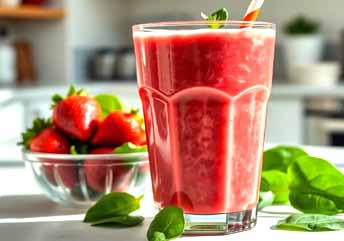
-
-
Recipe 1: Protein-Packed Berry Spinach Smoothie
Description: Whip up this nutrient-dense protein smoothie in just 5 minutes for a refreshing, healthy breakfast or post-workout boost. Packed with protein, fiber, and antioxidants, this smoothie supports muscle recovery and keeps you full for hours. Perfect for busy mornings or a quick snack!
Servings: 1
Prep Time: 5 minutes
Total Time: 5 minutesIngredients:
- 1 scoop (25–30g) high-quality protein powder (whey, plant-based, or collagen; vanilla or unflavored recommended)
- ½ small banana (about 50g, ripe for natural sweetness)
- 1 cup (30g) fresh spinach, washed
- ½ cup (75g) mixed frozen berries (strawberries, blueberries, raspberries)
- 1 cup (240ml) water or unsweetened almond milk (adjust for desired consistency)
- Optional: 2–3 ice cubes for a chilled texture
Equipment:
- Blender (high-speed recommended for smooth texture)
- Measuring cups and spoons
- Glass or shaker bottle for serving
Instructions:
- Prep Ingredients: Peel and break the banana into chunks. Rinse spinach thoroughly to remove any grit.
- Blend: Add water or almond milk to the blender first (this helps with blending). Then, add protein powder, banana, spinach, frozen berries, and ice cubes (if using).
- Process: Blend on high for 30–45 seconds until smooth and creamy. Stop and scrape down the sides if needed.
- Check Consistency: If too thick, add more liquid (2 tablespoons at a time) and blend again.
- Serve: Pour into a glass or shaker bottle. Enjoy immediately for maximum freshness!
Nutrition (Approximate per Serving):
- Calories: 200–250 kcal (varies by protein powder and liquid)
- Protein: 20–25g
- Carbohydrates: 20–25g
- Fat: 3–5g
- Fiber: 5–7g
Note: Values depend on specific brands. Check labels for precise nutrition.
-
-
Lunch (approx. 300 calories):
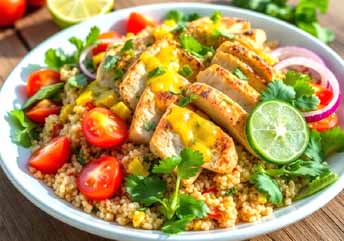
-
-
-
Recipe 1: Quinoa Chicken Salad with Lime Vinaigrette
Description: Toss together this vibrant quinoa salad for a high-protein, fiber-rich lunch that bursts with flavor. Grilled chicken, black beans, and fresh veggies combine with a zesty lime vinaigrette for a meal that’s as delicious as it is nutritious. Perfect for meal prep or a quick workday lunch!
Servings: 1
Prep Time: 10 minutes (assuming quinoa and chicken are pre-cooked)
Total Time: 10 minutesIngredients:
-
½ cup (85g) cooked quinoa (cooled)
-
3 oz (85g) grilled chicken breast, diced
-
¼ cup (60g) canned black beans, rinsed and drained
-
1 cup (30g) mixed greens (e.g., spinach, arugula, or lettuce)
-
5 cherry tomatoes, halved
-
For the Lime Vinaigrette:
-
1 tablespoon olive oil
-
1 tablespoon fresh lime juice
-
½ teaspoon Dijon mustard
-
Pinch of salt and black pepper
-
-
Optional: 1 tablespoon chopped fresh cilantro for garnish
Equipment:
-
Medium mixing bowl
-
Small bowl or jar for vinaigrette
-
Measuring cups and spoons
Instructions:
-
Prep Ingredients: Rinse and drain black beans. Halve cherry tomatoes. Dice pre-grilled chicken if not already prepared.
-
Make Vinaigrette: In a small bowl or jar, whisk together olive oil, lime juice, Dijon mustard, salt, and pepper until smooth.
-
Assemble Salad: In a medium bowl, combine cooked quinoa, diced chicken, black beans, mixed greens, and cherry tomatoes.
-
Dress Salad: Drizzle the lime vinaigrette over the salad. Toss gently to coat evenly.
-
Serve: Transfer to a plate or bowl. Garnish with cilantro if desired. Enjoy immediately or pack for a portable lunch!
Nutrition (Approximate per Serving):
-
Calories: 290–310 kcal
-
Protein: 25g
-
Carbohydrates: 25g
-
Fat: 10g
-
Fiber: 6g
Note: Values vary based on specific brands and portion sizes.
-
-
Recipe 2:
Create a rustic masterpiece with this flavorful recipe! Description: Savor this simple yet satisfying lunch featuring juicy grilled chicken breast paired with a colorful mix of steamed vegetables. This low-carb, high-protein meal is quick to prepare and packed with nutrients to keep you energized all afternoon.
Servings: 1
Prep Time: 5 minutes
Cook Time: 10 minutes
Total Time: 15 minutesIngredients:
-
4 oz (113g) boneless, skinless chicken breast
-
1 teaspoon olive oil
-
½ teaspoon garlic powder
-
Pinch of salt and black pepper
-
1.5 cups (150g) mixed vegetables (e.g., broccoli florets, sliced carrots, bell pepper strips)
-
Optional: 1 teaspoon fresh lemon juice or a sprinkle of fresh herbs (e.g., thyme, parsley)
Equipment:
-
Grill pan or skillet
-
Steamer basket or microwave-safe bowl with lid
-
Tongs
-
Measuring spoons
Instructions:
-
Season Chicken: Rub chicken breast with olive oil, garlic powder, salt, and pepper.
-
Grill Chicken: Heat a grill pan or skillet over medium-high heat. Grill chicken for 4–5 minutes per side until internal temperature reaches 165°F (74°C). Set aside to rest for 2 minutes.
-
Steam Vegetables: Place mixed vegetables in a steamer basket over boiling water. Steam for 5–7 minutes until crisp-tender. Alternatively, microwave in a covered bowl with 1 tablespoon water for 3–4 minutes.
-
Slice Chicken: Slice the rested chicken breast into strips.
-
Serve: Plate the steamed vegetables and top with sliced chicken. Squeeze fresh lemon juice over the dish or sprinkle with herbs for extra flavor.
Nutrition (Approximate per Serving):
-
Calories: 280–300 kcal
-
Protein: 30g
-
Carbohydrates: 10g
-
Fat: 8g
-
Fiber: 4g
Note: Values depend on vegetable types and portion sizes.
-
-
-
Savor the flavors of this delicious homemade recipe, perfect for any meal! -
Recipe 3: Tuna-Stuffed Bell Pepper
Description: Enjoy this no-cook, protein-packed lunch that’s ready in 5 minutes. A fresh bell pepper stuffed with creamy tuna salad offers a low-calorie, nutrient-dense meal that’s perfect for a quick lunch at home or on the go.
Servings: 1
Prep Time: 5 minutes
Total Time: 5 minutesIngredients:
-
½ large bell pepper (any color, about 100g), halved and seeded
-
½ can (2.5 oz or 70g) tuna in water, drained
-
1 tablespoon light mayonnaise or plain Greek yogurt
-
½ teaspoon Dijon mustard (optional, for flavor)
-
Pinch of black pepper
-
Optional: 1 teaspoon chopped celery or red onion for crunch
Equipment:
-
Small mixing bowl
-
Spoon or fork
-
Knife and cutting board
Instructions:
-
Prep Bell Pepper: Rinse the bell pepper, cut in half lengthwise, and remove seeds and membranes. Set one half aside for another use.
-
Make Tuna Salad: In a small bowl, mix drained tuna, light mayonnaise or Greek yogurt, Dijon mustard (if using), and black pepper. Add celery or onion for extra texture if desired.
-
Stuff Pepper: Spoon the tuna mixture into the bell pepper half, packing it tightly.
-
Serve: Enjoy immediately or wrap in foil for a portable lunch.
Nutrition (Approximate per Serving):
-
Calories: 270–290 kcal
-
Protein: 20g
-
Carbohydrates: 8g
-
Fat: 10g
-
Fiber: 2g
Note: Values vary based on mayonnaise or yogurt choice.
-
-
-
-
Dinner (approx. 350 calories)
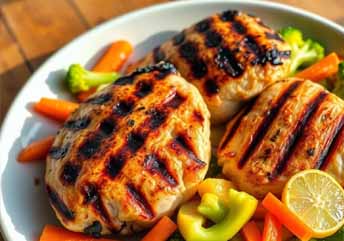
-
-
Recipe 1: Grilled Chicken with Roasted Asparagus and Brown Rice
Description: Savor this classic, high-protein dinner featuring juicy grilled chicken, tender roasted asparagus, and nutty brown rice. Ready in 25 minutes, this balanced meal keeps you full and supports muscle health with minimal effort.
Servings: 1
Prep Time: 5 minutes
Cook Time: 20 minutes
Total Time: 25 minutesIngredients:
-
5 oz (140g) boneless, skinless chicken breast
-
1 teaspoon olive oil, divided
-
½ teaspoon garlic powder
-
Pinch of salt and black pepper
-
8–10 asparagus spears (about 100g), tough ends trimmed
-
¼ cup (45g) cooked brown rice (cooled or warm)
-
Optional: 1 teaspoon fresh lemon juice or chopped parsley for garnish
Equipment:
-
Grill pan or skillet
-
Baking sheet
-
Aluminum foil (optional, for easy cleanup)
-
Measuring cups and spoons
Instructions:
-
Preheat Oven: Set oven to 400°F (200°C). Line a baking sheet with foil for easy cleanup.
-
Season Chicken: Rub chicken breast with ½ teaspoon olive oil, garlic powder, salt, and pepper.
-
Grill Chicken: Heat a grill pan or skillet over medium-high heat. Grill chicken for 5–6 minutes per side until internal temperature reaches 165°F (74°C). Set aside to rest for 3 minutes.
-
Roast Asparagus: Toss asparagus with remaining ½ teaspoon olive oil, a pinch of salt, and pepper. Spread on the baking sheet and roast for 10–12 minutes until tender and slightly crisp.
-
Prepare Rice: If not pre-cooked, cook brown rice according to package instructions (typically 20–25 minutes). Measure out ¼ cup.
-
Serve: Plate the brown rice, sliced grilled chicken, and roasted asparagus. Drizzle with lemon juice or sprinkle with parsley for extra flavor.
Nutrition (Approximate per Serving):
-
Calories: 350–370 kcal
-
Protein: 35g
-
Carbohydrates: 20g
-
Fat: 10g
-
Fiber: 3g
Note: Values vary based on specific brands and portion sizes.
-
-
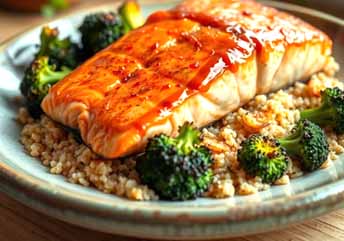
-
-
Recipe 2: Baked Salmon with Roasted Broccoli and Quinoa
Description: Enjoy this heart-healthy dinner featuring flaky baked salmon, vibrant roasted broccoli, and nutrient-dense quinoa. Ready in 25 minutes, this meal is rich in omega-3s and fiber, perfect for a wholesome evening.
Servings: 1
Prep Time: 5 minutes
Cook Time: 20 minutes
Total Time: 25 minutesIngredients:
-
4 oz (113g) salmon fillet, skinless
-
1 teaspoon olive oil, divided
-
½ teaspoon paprika
-
Pinch of salt and black pepper
-
1.5 cups (150g) broccoli florets
-
¼ cup (45g) cooked quinoa (cooled or warm)
-
Optional: 1 teaspoon fresh lemon juice or dill for garnish
Equipment:
-
Baking sheet
-
Aluminum foil (optional, for easy cleanup)
-
Measuring cups and spoons
Instructions:
-
Preheat Oven: Set oven to 400°F (200°C). Line a baking sheet with foil.
-
Season Salmon: Rub salmon with ½ teaspoon olive oil, paprika, salt, and pepper. Place on one side of the baking sheet.
-
Prep Broccoli: Toss broccoli florets with remaining ½ teaspoon olive oil, a pinch of salt, and pepper. Spread on the other side of the baking sheet.
-
Bake: Bake salmon and broccoli for 12–15 minutes until salmon flakes easily with a fork (internal temperature 145°F or 63°C) and broccoli is tender and slightly charred.
-
Prepare Quinoa: If not pre-cooked, cook quinoa according to package instructions (typically 15 minutes). Measure out ¼ cup.
-
Serve: Plate the quinoa, baked salmon, and roasted broccoli. Drizzle with lemon juice or sprinkle with dill for a fresh finish.
Nutrition (Approximate per Serving):
-
Calories: 360–380 kcal
-
Protein: 28g
-
Carbohydrates: 18g
-
Fat: 15g
-
Fiber: 4g
Note: Values depend on portion sizes and brands.
-
-
-
Whip up this hearty recipe for a comforting and delicious meal! -
Recipe 3: Chicken, Spinach, and Strawberry Salad
Description: Brighten your evening with this refreshing, no-fuss salad featuring tender chicken, nutrient-packed spinach, and sweet strawberries. Topped with crunchy almonds and a light balsamic vinaigrette, this low-calorie meal is ready in 10 minutes and perfect for a light dinner.
Servings: 1
Prep Time: 10 minutes
Total Time: 10 minutesIngredients:
-
4 oz (113g) cooked chicken breast, sliced or shredded (grilled or baked)
-
3 cups (90g) fresh spinach, washed
-
½ cup (75g) sliced strawberries
-
1 tablespoon (8g) slivered almonds
-
For the Light Balsamic Vinaigrette:
-
1 tablespoon olive oil
-
1 tablespoon balsamic vinegar
-
½ teaspoon Dijon mustard
-
Pinch of salt and black pepper
-
-
Optional: 1 teaspoon crumbled feta for extra flavor
Equipment:
-
Medium mixing bowl
-
Small bowl or jar for vinaigrette
-
Measuring cups and spoons
Instructions:
-
Prep Ingredients: Rinse spinach thoroughly and pat dry. Slice strawberries and cooked chicken if not already prepared.
-
Make Vinaigrette: In a small bowl or jar, whisk together olive oil, balsamic vinegar, Dijon mustard, salt, and pepper until smooth.
-
Assemble Salad: In a medium bowl, combine spinach, sliced chicken, strawberries, and slivered almonds.
-
Dress Salad: Drizzle the balsamic vinaigrette over the salad. Toss gently to coat evenly.
-
Serve: Transfer to a plate or bowl. Sprinkle with feta if desired. Enjoy immediately for maximum freshness!
Nutrition (Approximate per Serving):
-
-
Calories: 340–360 kcal
-
Protein: 30g
-
Carbohydrates: 12g
-
Fat: 15g
-
Fiber: 4g
Note: Values vary based on vinaigrette and chicken preparation.
-
-
-
Snacks (approx. 100 calories)
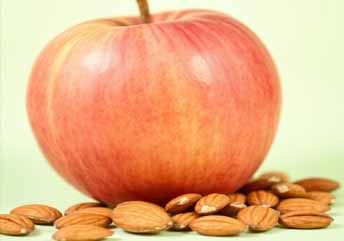
-
-
Recipe 1: Apple with Almonds
Description: Pair a crisp apple with crunchy almonds for a satisfying, fiber-rich snack that’s perfect for on-the-go energy. This no-prep combo offers a sweet-savory balance and keeps you full until your next meal.
Servings: 1
Prep Time: 5 minutes
Total Time: 5 minutesIngredients:
-
1 small apple (about 120g, any variety like Gala or Fuji)
-
10 raw almonds (about 15g)
-
Optional: A sprinkle of cinnamon for extra flavor
Equipment:
-
Knife (optional, for slicing apple)
-
Small bowl or portable container
Instructions:
-
Prep Apple: Rinse the apple under cold water and pat dry. Leave whole or slice into wedges for easier eating.
-
Measure Almonds: Count out 10 almonds to ensure portion control.
-
Serve: Pair the apple (whole or sliced) with almonds. Sprinkle with cinnamon if desired for a flavor boost. Enjoy immediately or pack in a container for a portable snack.
Nutrition (Approximate per Serving):
-
Calories: 130–150 kcal
-
Protein: 3g
-
Carbohydrates: 17g
-
Fat: 7g
-
Fiber: 4g
Note: Values vary based on apple size and almond brand.
-
-
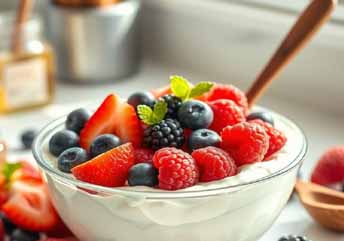
-
-
Recipe 2: Greek Yogurt with Mixed Berries
Description: Whip up this creamy, protein-packed snack by combining plain Greek yogurt with sweet mixed berries. Ready in minutes, this refreshing treat is perfect for a mid-afternoon boost or post-workout recovery.
Servings: 1
Prep Time: 5 minutes
Total Time: 5 minutesIngredients:
-
½ cup (120g) plain Greek yogurt (non-fat or 2% for creaminess)
-
¼ cup (40g) mixed berries (e.g., strawberries, blueberries, raspberries; fresh or frozen)
-
Optional: 1 teaspoon honey or a sprinkle of chia seeds for added flavor
Equipment:
-
Small bowl or cup
-
Measuring cups and spoons
Instructions:
-
Prep Berries: Rinse fresh berries under cold water and pat dry. If using frozen berries, thaw for 5–10 minutes.
-
Assemble Snack: Scoop Greek yogurt into a small bowl or cup. Top with mixed berries.
-
Customize: Drizzle with honey or sprinkle with chia seeds if desired for extra sweetness or crunch.
-
Serve: Enjoy immediately with a spoon for maximum freshness.
Nutrition (Approximate per Serving):
-
Calories: 100–120 kcal
-
Protein: 10g
-
Carbohydrates: 10g
-
Fat: 2g
-
Fiber: 2g
Note: Values depend on yogurt type and berry selection.
-
-
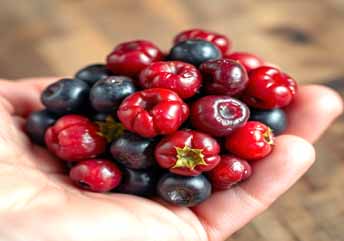
Option 3: A small handful of berries (approx. 1 cup).
Sample 7 Day 1000 Calories a Day Menu Plan
One of the biggest misconceptions about a 1000 calorie menu plan is that it’s bland, boring, or repetitive. People think you’ll be stuck eating salads and tasteless meals every day. But here’s the truth: a 1000 calorie diet plan can be flavorful, varied, and even exciting if you get a little creative!
Day 1-3: Easy-to-Make, Filling Meals
For the first three days, we’ll focus on simple calorie recipes that are easy to put together but packed with nutrients. The goal here is to give your body a break from heavy, calorie-dense foods while keeping you full and energized.
High-Protein 1000 Calorie Menu Plan (7 Days)
Day 1:
- Breakfast: Egg white omelet with spinach (3 egg whites, 1 cup spinach, 30g protein, 200 calories)
- Lunch: Grilled chicken salad (4 oz chicken, mixed greens, lemon dressing, 35g protein, 300 calories)
- Dinner: Baked salmon with broccoli (4 oz salmon, 1.5 cups broccoli, 35g protein, 400 calories)
- Snack: Greek yogurt (½ cup, 15g protein, 100 calories)
Repeat for days 2-7 with similar high-protein swaps (e.g., tofu, turkey).
Cultural 1000 Calorie Menus
-
Indian Plan (Day 1):
- Lunch: Lentil dal (½ cup, 200 calories) with cucumber raita (½ cup, 100 calories).
- Recipe: Cook ¼ cup lentils with spices, serve with ¼ cup yogurt and cucumber.
- Mexican Plan (Day 1):
- Dinner: Chicken tacos (2 corn tortillas, 3 oz chicken, salsa, 300 calories).
- Recipe: Grill chicken, add to tortillas with 2 tbsp salsa, no cheese.
Day 2
- Breakfast: Oatmeal topped with chia seeds and blueberries (250 calories)
- Lunch: Grilled chicken salad with mixed greens, cucumbers, and light vinaigrette (300 calories)
- Dinner: Stir-fried tofu with broccoli and bell peppers, served over cauliflower rice (350 calories)
- Snack: A small handful of almonds (100 calories)
Day 3
- Breakfast: Scrambled egg whites with spinach and a slice of whole-grain toast (200 calories)
- Lunch: Tuna salad with cucumber, tomatoes, and olive oil (300 calories)
- Dinner: Grilled shrimp skewers with zucchini and a quinoa side (400 calories)
- Snack: Sliced apple with a tablespoon of peanut butter (100 calories)
Day 4-7: Creative Low-Calorie Recipes
For the second half of the week, let’s get a bit more creative. We’ll introduce more low-calorie breakfast ideas and easy-to-make dinners that’ll keep you satisfied without going over your daily calorie limit.
Day 4
- Breakfast: Smoothie with spinach, banana, almond milk, and protein powder (250 calories)
- Lunch: Hummus and veggie wrap with a side of carrot sticks (300 calories)
- Dinner: Baked chicken breast with roasted Brussels sprouts and quinoa (400 calories)
- Snack: Greek yogurt with a drizzle of honey (100 calories)
Day 5
- Breakfast: Cottage cheese with sliced strawberries and a sprinkle of granola (200 calories)
- Lunch: Turkey burger (no bun) with a side of roasted veggies (300 calories)
- Dinner: Baked cod with roasted carrots and wild rice (400 calories)
- Snack: A small handful of mixed nuts (100 calories)
Day 6
- Breakfast: Poached eggs on whole-grain toast with avocado slices (250 calories)
- Lunch: Quinoa salad with chickpeas, cucumbers, and lemon vinaigrette (300 calories)
- Dinner: Grilled tilapia with green beans and mashed sweet potatoes (400 calories)
- Snack: A boiled egg (100 calories)
Day 7
- Breakfast: Smoothie with almond milk, protein powder, spinach, and mixed berries (250 calories)
- Lunch: Grilled chicken wrap with lettuce, tomato, and light dressing (300 calories)
- Dinner: Stuffed bell peppers with lean ground beef and quinoa (400 calories)
- Snack: A small apple (50 calories) and a slice of cheese (50 calories)
Cultural Adaptations (A Crucial Consideration!)
For those searching for a 1000 calorie diet menu plan 7 days American, Maxican, Indian or other specific cuisines, adapting this plan is certainly possible, but it’s exceptionally challenging. It requires meticulous attention to traditional ingredients, cooking methods, and their precise calorie content.
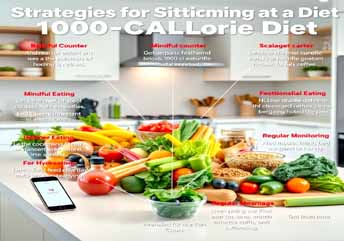
Actionable Strategies for Sticking to a 1000-Calorie Diet
Stay Hydrated to Curb Hunger
Persistent hunger pangs may signal thirst, not true hunger. Therefore, drink plenty of water throughout the day to combat hunger and fatigue effectively.
Master Meal Prep
With strict 1000-calorie limits, spontaneity leads to slip-ups. Prep breakfasts, lunches, and snacks for several days in advance. This eliminates guesswork and reduces temptation when hunger or time constraints hit.
Listen to Your Body
Discipline matters, but ignoring distress signals like severe weakness, dizziness, or extreme fatigue is dangerous. Stop the diet immediately and consult your doctor if these symptoms appear.
Strategic Movement (Not Intense Workouts!)
Many individuals frequently wonder about physical activity when they are on such a restricted diet. However, it’s absolutely vital to be extremely cautious here.
- For example, while regular exercise is inherently excellent for overall health and can undoubtedly promote weight loss, intense or strenuous workouts are generally not recommended while following a 1000-calorie plan.
- Instead, focus on light activities like gentle walking, calm stretching, or very mild yoga. Ultimately, any exercise should be explicitly approved by your doctor or medical team.
Plan for Social Situations
A highly restrictive diet can certainly make social gatherings and eating out tricky. Nevertheless, you absolutely don’t have to become a hermit or avoid your friends!
- For instance, if you’re going out to eat, make it a habit to check the restaurant’s menu online beforehand to identify compliant options. You might even eat a small, pre-planned meal at home before you go, therefore, removing some pressure.
- Furthermore, if you feel comfortable, politely explain your temporary dietary needs to friends or family. Generally, most people will understand and offer their support. Indeed, maintaining social connections is important for your mental well-being throughout this challenging period.
-
Transitioning Off a 1000-Calorie Diet Successfully
Avoid the Rebound Trap
Many believe they can resume normal eating after a 1000-calorie diet without consequences, but this risks rapid weight regain. Your body, adapted to scarcity via metabolic adaptation, stores excess calories efficiently, leading to frustrating yo-yo effects.
The Reverse Dieting Blueprint
Prevent weight regain with reverse dieting, a science-backed strategy to gradually increase calories safely. Follow these steps:
-
Step 1: Gradual Increase
Slowly add 50-100 calories daily every few days or weekly. This gentle approach helps your metabolism adjust without shock. -
Step 2: Prioritize Nutrients
Reintroduce complex carbs (e.g., quinoa, sweet potatoes) and healthy fats strategically. Maintain high protein intake to preserve muscle. -
Step 3: Monitor and Adjust
Track weight, energy, and hunger cues to find your maintenance calorie level, ensuring no unwanted gain or loss.
Build Long-Term Health
Sustainable weight loss goes beyond the scale. Use the transition to adopt balanced eating and moderate activity. A 1200-calorie plan, for example, may yield slower results but fosters lasting habits, outperforming extreme restriction.
Discover the benefits of a 1000 calorie a day menu for weight loss. -
Making Informed Choices
So, what’s the definitive bottom line regarding a 1000 Calories a Day Menu Plan? It certainly can facilitate rapid weight loss. However, it is fundamentally an extreme, short-term diet that carries considerable risks if it’s not expertly managed and meticulously supervised by medical professionals.
Making Informed Decisions
Armed with all this detailed, evidence-based knowledge, you are now in a much stronger position to have a truly informed and productive discussion with your healthcare team. Ultimately, don’t just grab a “free 1000 calorie diet menu plan 7 days” or any random “1000 calorie diet menu plan 7 days PDF” you find online and start; instead, fully understand its profound implications and always prioritize your absolute safety and well-being.
Consult Your Doctor
Please remember: This entire guide is provided for educational purposes only and is not medical advice. Before undertaking any form of restrictive eating plan, especially a 1000 calorie eating regimen or any type of Very Low-Calorie Diet (VLCD), you must always consult a qualified healthcare professional (your doctor or a registered dietitian).
Ready to get started? Grab your free 1000 calorie diet meal plan for 14 days PDF download below and take the first step toward a healthier, lighter you.
Frequently Asked Questions (FAQs)
1. Is 1000 calories a day safe?
No, it’s only safe under medical supervision due to risks like nutrient deficiencies and muscle loss (NIH, 2023).
2. Can diabetics follow a 1000 calorie diet?
Not without medical supervision, as it may destabilize blood sugar.
3. How much weight will I lose?
About 1-2 pounds weekly, but muscle loss is a risk without protein.
4. Is it safe for teens?
No, growing bodies need more calories for development.
5. How to avoid hunger?
Prioritize protein and fiber, like eggs and broccoli.
6. What is a 1000-calorie diet?
A 1000-calorie diet is a very low-calorie diet (VLCD) involving 800–1000 calories daily, typically used for rapid weight loss under medical supervision.
Disclaimer: The content on this website is intended for informational purposes only and should not be taken as medical advice. Always consult with a qualified healthcare professional for personalized guidance regarding your health needs.


